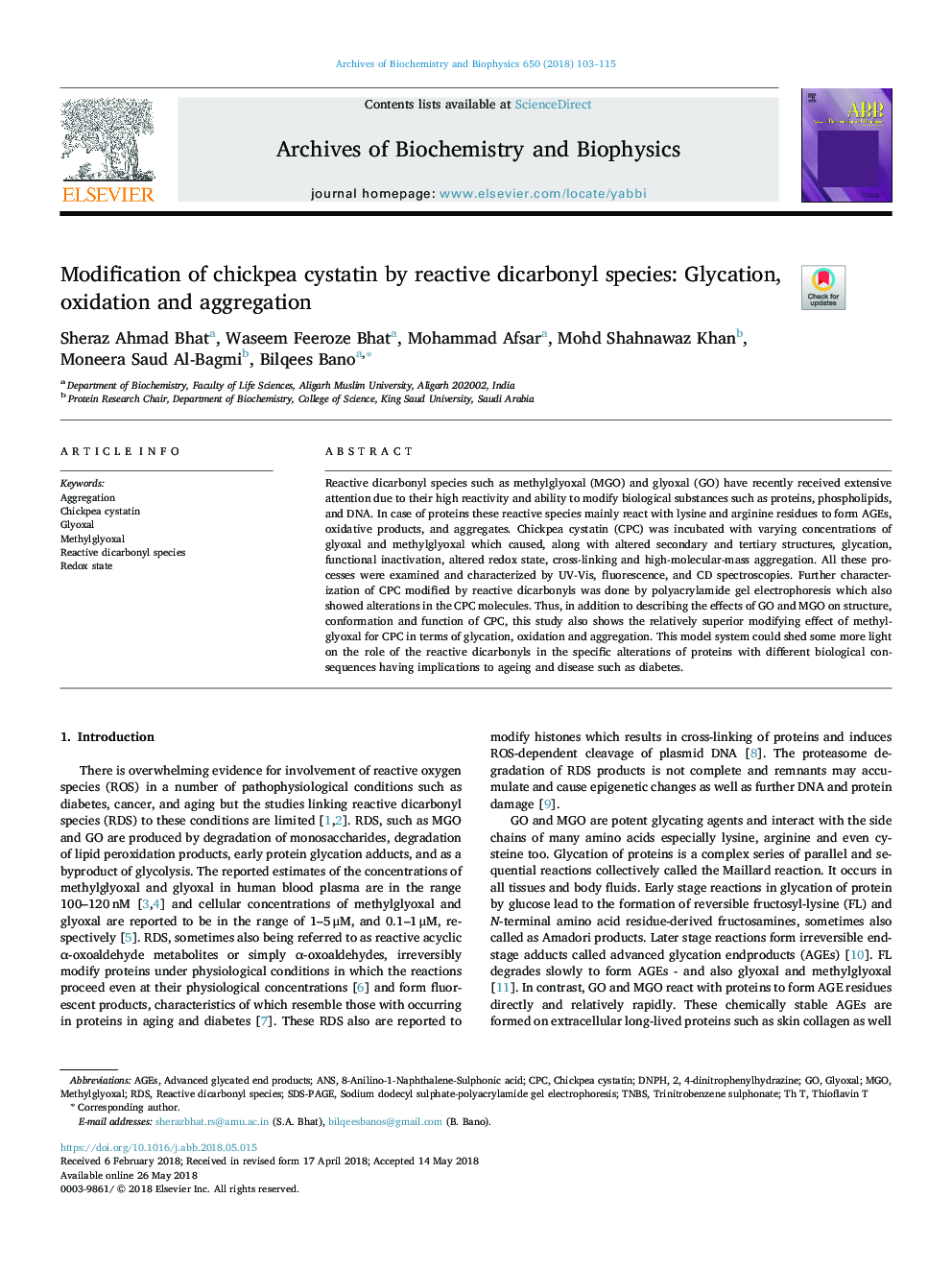| Article ID | Journal | Published Year | Pages | File Type |
|---|---|---|---|---|
| 8288528 | Archives of Biochemistry and Biophysics | 2018 | 13 Pages |
Abstract
Reactive dicarbonyl species such as methylglyoxal (MGO) and glyoxal (GO) have recently received extensive attention due to their high reactivity and ability to modify biological substances such as proteins, phospholipids, and DNA. In case of proteins these reactive species mainly react with lysine and arginine residues to form AGEs, oxidative products, and aggregates. Chickpea cystatin (CPC) was incubated with varying concentrations of glyoxal and methylglyoxal which caused, along with altered secondary and tertiary structures, glycation, functional inactivation, altered redox state, cross-linking and high-molecular-mass aggregation. All these processes were examined and characterized by UV-Vis, fluorescence, and CD spectroscopies. Further characterization of CPC modified by reactive dicarbonyls was done by polyacrylamide gel electrophoresis which also showed alterations in the CPC molecules. Thus, in addition to describing the effects of GO and MGO on structure, conformation and function of CPC, this study also shows the relatively superior modifying effect of methylglyoxal for CPC in terms of glycation, oxidation and aggregation. This model system could shed some more light on the role of the reactive dicarbonyls in the specific alterations of proteins with different biological consequences having implications to ageing and disease such as diabetes.
Keywords
Related Topics
Life Sciences
Biochemistry, Genetics and Molecular Biology
Biochemistry
Authors
Sheraz Ahmad Bhat, Waseem Feeroze Bhat, Mohammad Afsar, Mohd Shahnawaz Khan, Moneera Saud Al-Bagmi, Bilqees Bano,
